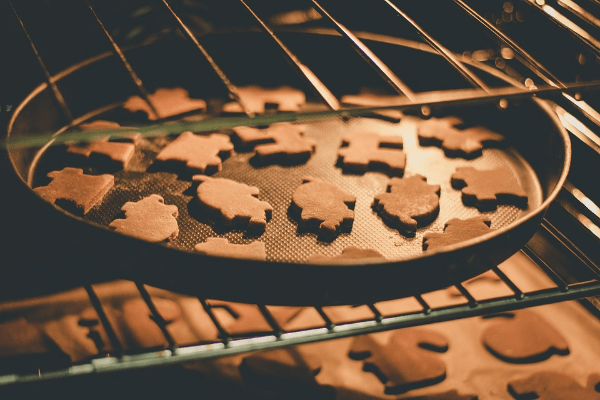Anyone that has ever crossed paths with an oven will be well aware of the adjustable rack positions within them.
However, did you know that the positions actually play a pivotal role in the cooking process?
When it comes to choosing top, middle or bottom in your oven, you don’t have to strike it lucky with guesswork. There’s actually a defined method to the ovenary madness.
Don’t let your culinary dreams go up in smoke or fall foul to a half-baked approach. Get the hot take on oven rack positions and keep your mealtimes piping hot and cooked to perfection.

Is Oven Rack Position Important?
In a nutshell – yes!
The placement of the right food on the right rack can be the difference between good eating and good riddance.
As a general guide on how to best utilise a multi-rack oven, the following dishes are placed on these racks for optimal cooking.
Bottom Oven Rack
Theoretically providing the closest proximity to the heat source, the bottom rack is perfect for foods that require intense heat for a short period of time. As such, this rack position is ideal for dishes like pizza and flatbreads.
Middle Oven Rack
The go-to position for most items of food, this is the safest bet for oven cooking items for an even finish – ideal for pies, pastries and lasagnes. This position allows the hot air to circulate around the food freely and fairly for a balanced bake.
Top Oven Rack
If you wish to use your oven for the purpose of grilling food, you’ll need to familiarise yourself with the top shelf. This will give you direct access to the grill element on the roof of the oven. In the US, this is commonly referred to as “broiling”, so don’t be alarmed or confused if you stumble across the term “broiler” – it basically means “grill” to anyone outside the United States.
Is Oven Rack Position Important?
Naturally, oven models can and usually will vary from one brand to the next and you may find your oven features multiple levels outside of the simple top/middle/bottom trifecta. These are commonly found in between each of the aforementioned positions.
These mid-level settings allow for additional flexibility when cooking bulkier items, such as casserole dishes and large meats, while they can also provide a great middle-ground should you want to adjust your bake during cooking (e.g. lower the level if your food starts to burn).
The Golden-Brown Rule
A great rule of thumb when it comes to identifying which rack to use for your dish is to simply identify how you want your item to be cooked.
If you want the bottom of the food to brown, place low in the over; for the top to brown, place high; and, for the best of both worlds, place in the middle.
Cooking with Multiple Oven Racks
Having additional racks in the oven can provide a great way to cook several things at once. This can be particularly useful if you are cooking in bulk; e.g. baking several trays of cookies or multiple pizzas simultaneously.
However, when you do utilise the additional oven racks for cooking a variety of things at the same time, it’s worth keeping the following points in mind.
Food Placement
Theoretically As previously mentioned, cooking your food on varying levels of the oven can achieve a varying result, with the higher level resulting in a different finish than the lower. For an even bake, it may be worth moving your trays around midway through to ensure all items are cooked equally.
Cooking Time
Additionally, it’s worth remembering that food takes longer to cook the more items you have in your oven. It’s widely believed that two dishes will take 15% longer to cook than one: so, if you’re pizza was to take 10 mins by itself, cook for an additional minute and a half.
Multiple Oven Racks
Cooking with additional racks in the oven can not only make life easier for cooking in general, it can be a great solution for entertaining guests and catering for additional mouths to feed.
Don’t give your oven an easy ride. Get the most out of your oven by making sure you have the right equipment for the job.
If your grills, pans and oven trays are looking a little worse for wear or you simply want a couple of extra layers to add to your oven, head over to our replacements page now and bring your oven cooking experience to a whole new level today!
For more information on oven accessories and replacement parts, why not get in touch to find out more? Call now on 02920 452 510 or click the button below to drop us a message online.
Contact Us